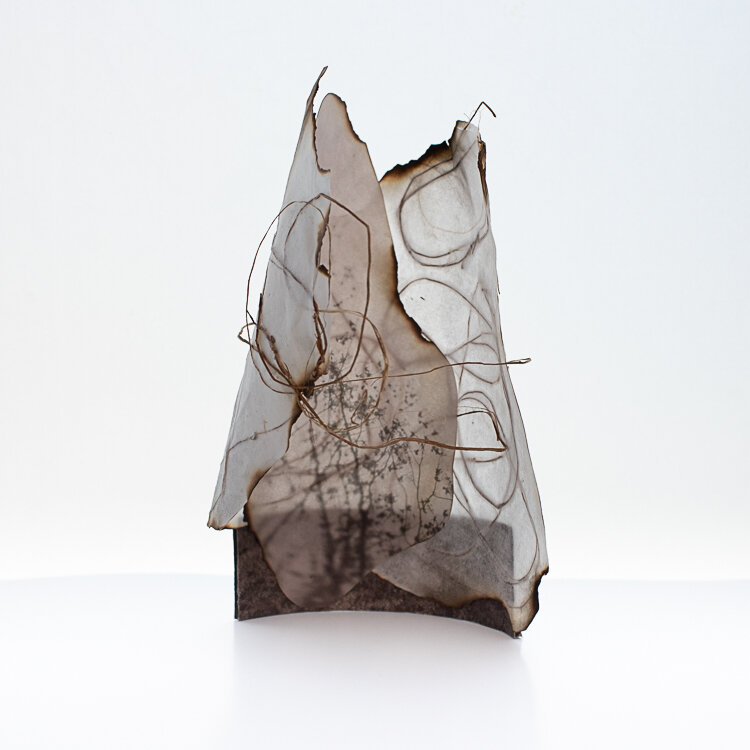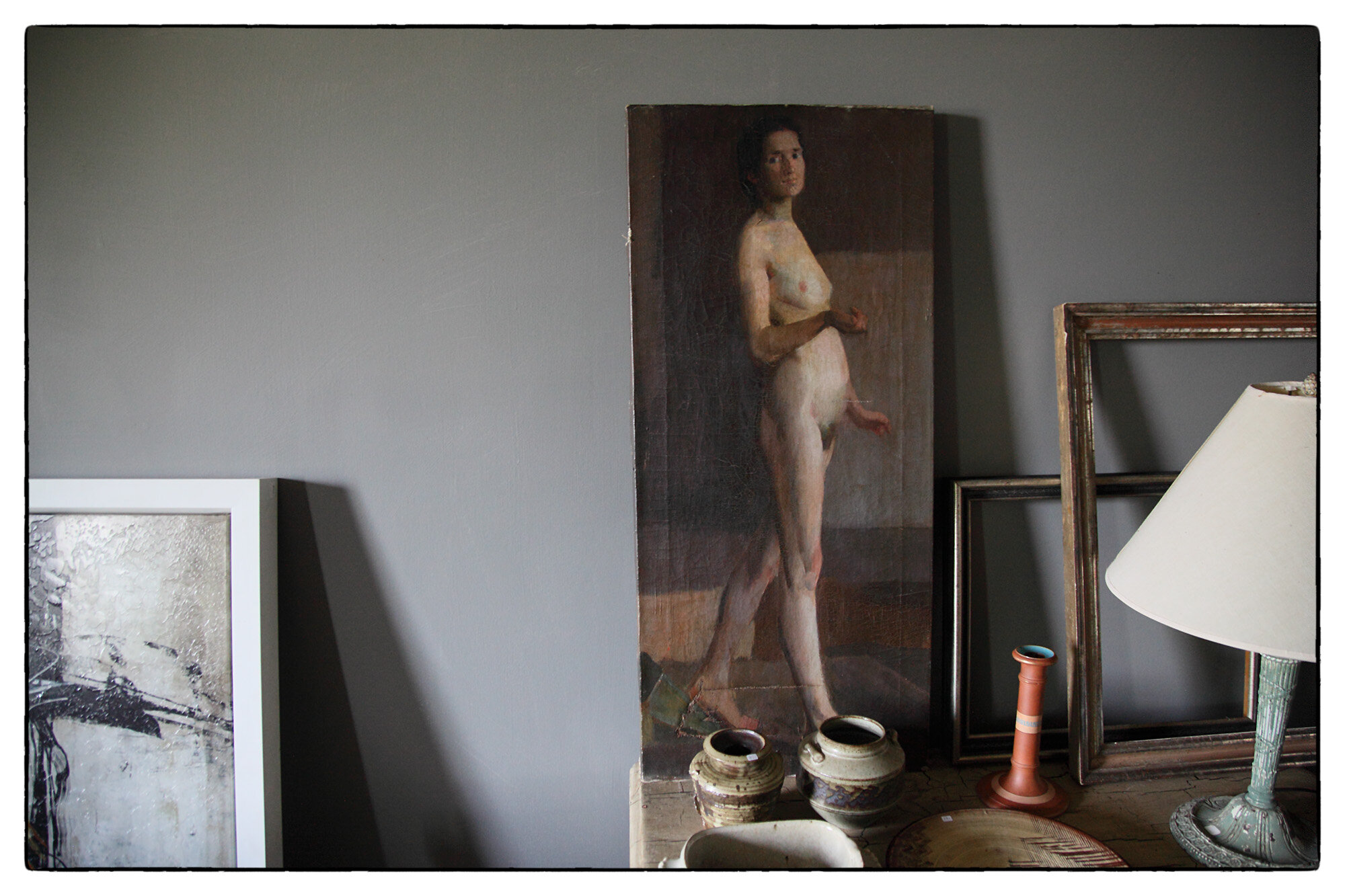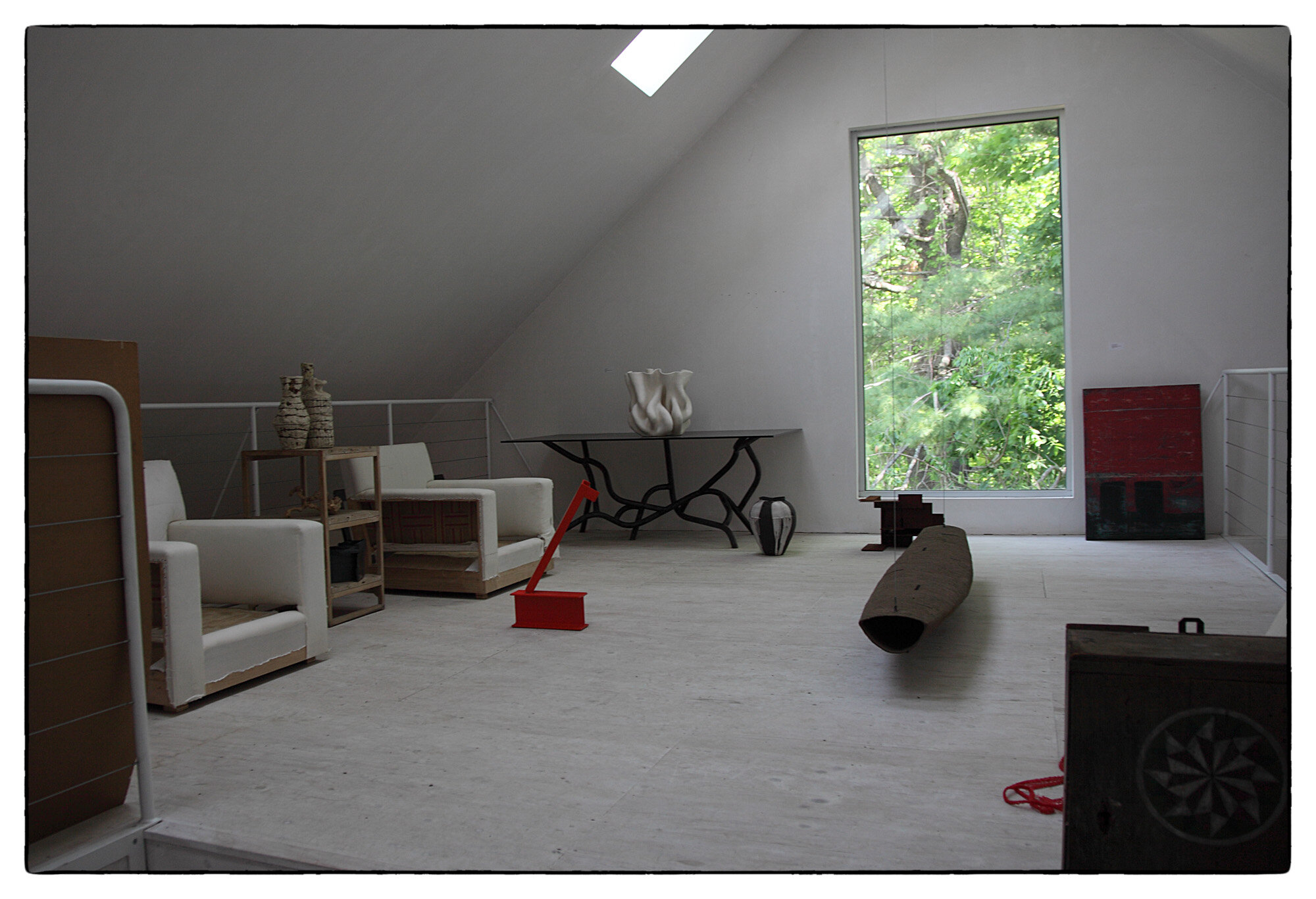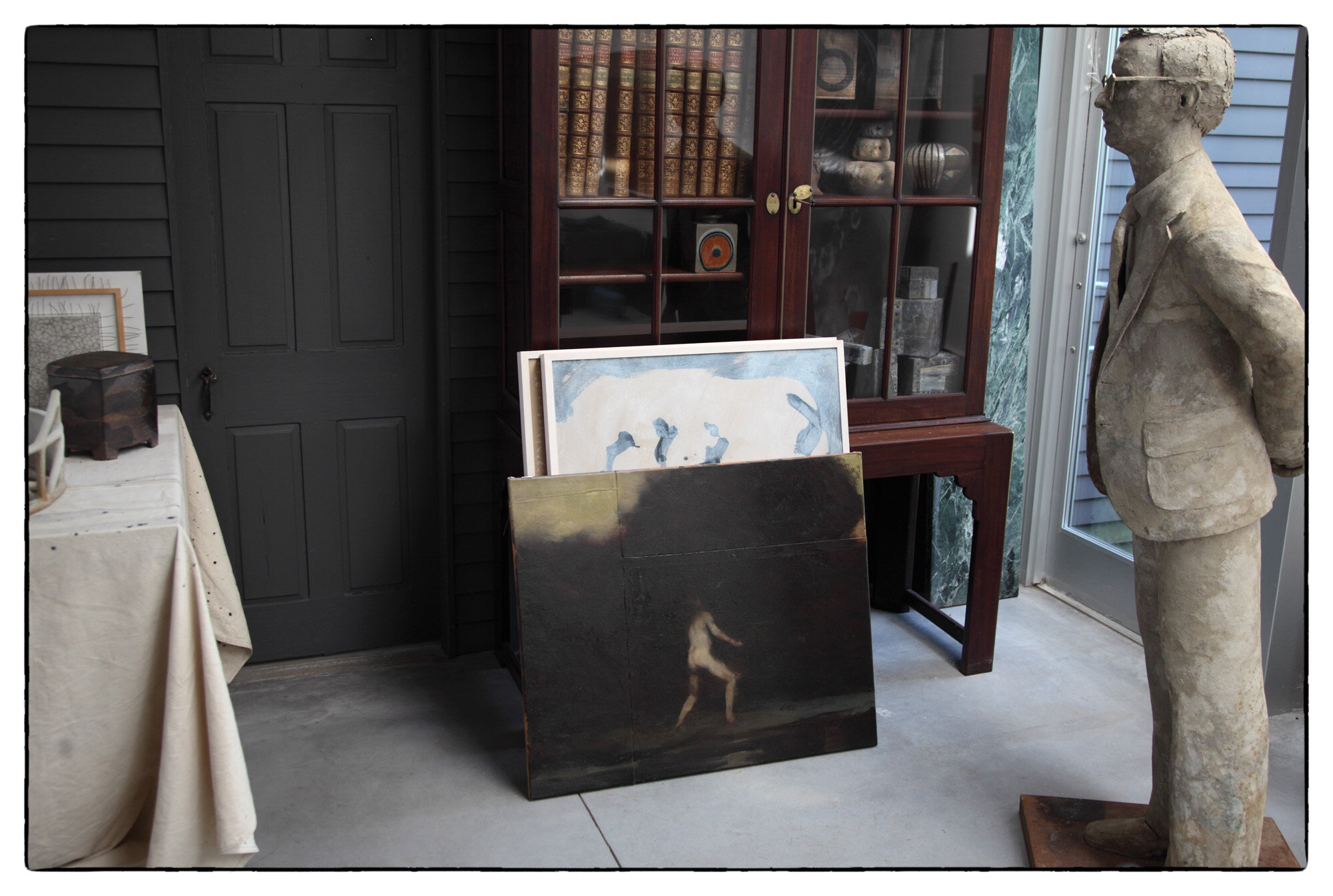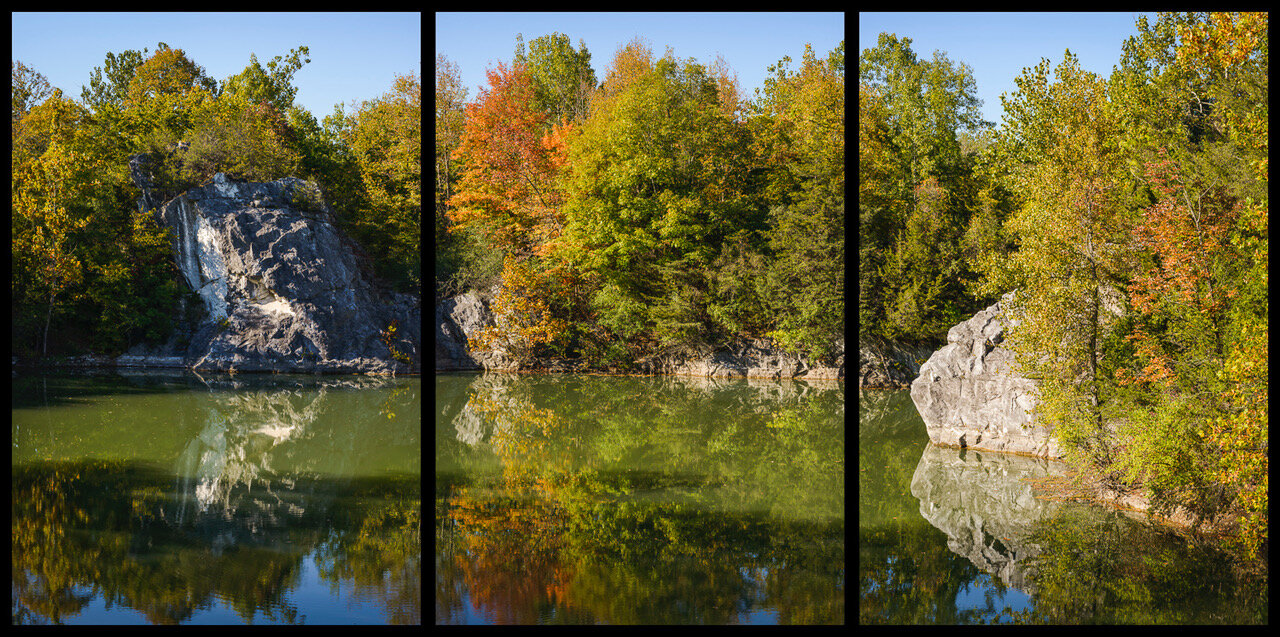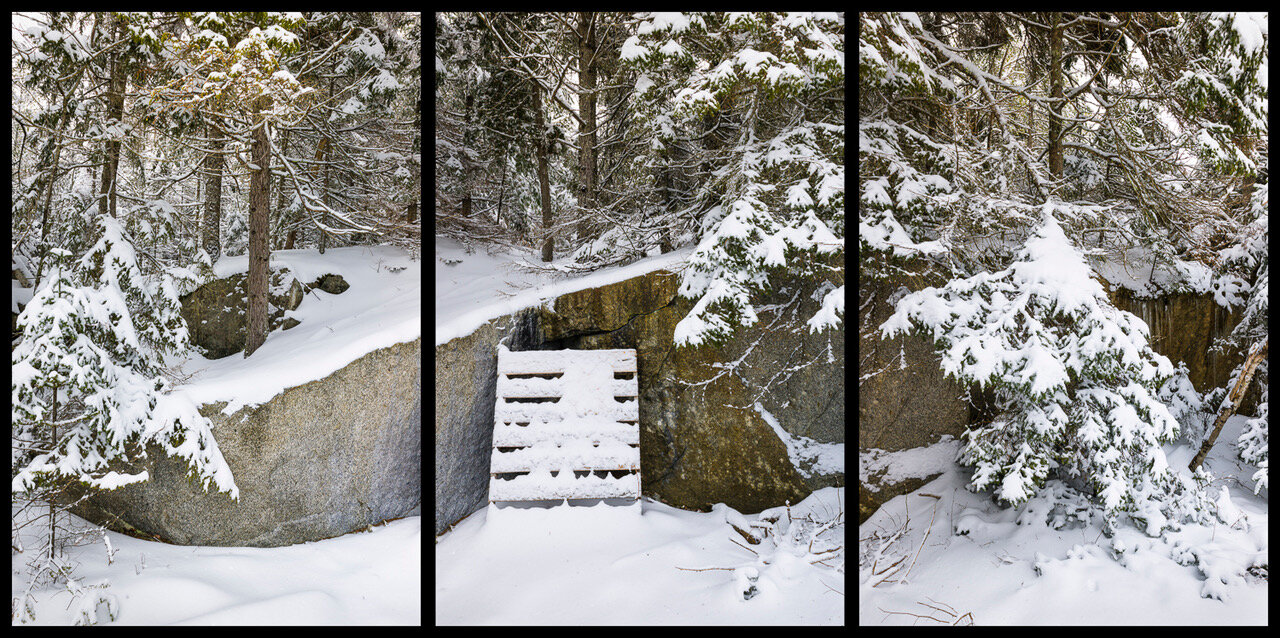Summer Solstice
We are only days into the first week of summer as we work on this issue of the Antidote. Portland is opening up, people are on the streets without masks, giving and receiving hugs and planning get togethers for the future. MMPA is too and we hope to be be physically open very soon. In the meantime, enjoy the ephemerality of summer in Maine, and our best efforts of showcasing your wonderful works in the Antidote. Please continue to delight us with your submissions. - Denise Froehlich, Director of MMPA
ALL THINGS MELLOW IN THE MIND
by Duane Michals (1932- )
All things mellow in the mind,
A sleight of hand, a trick of time.
And even our great love will fade,
So we’ll be strangers in the grave.
That’s why this moment is so dear,
I kiss your lips and we are here.
So let’s hold tight and touch and feel.
For this instant we are real.
Wildlight
New Work by Karen Olson
Karen Olson, Into the Mist, 2021, Sculptural photograph, 6x4 inches
During this year of social distancing we lost our close connection with family members, friends, and community. Many of us turned to the woods seeking another connection that may have been long forgotten. Shinrin yoku, is a Japanese term to describe the act of fully immersing oneself in the environment as a practice of meditation. This idea was embraced in the 1990’s by weary tech industry workers as a way to disconnect from the hectic pace of urban life and reconnect with and preserve Japan’s forests. Experiencing a close connection to the flora through all the senses, including touch, provides great physiological and psychological benefit to our being.
Photographer, Karen Olson discovered shinrin yoku while grieving the loss of her husband in 2018. Walks in the woods near her studio in Hope, Maine provided solace and a healing connection to the land. The forest became a new community embracing her visits and welcoming her observations through the lens. Her photographs were a sort of conversation with the land as she explored the tactile connection between self and the forest community. During this time she created the series Wildheart to express the healing process that the forest provided through her experience. Recently, wanting to further convey the tactile quality of her experiences in the environment, Karen began sculpting her photographs into shapes that represent the forest’s embrace, light as it filters through the leaves and the cycle of life and decay. This evolved into her most recent body of work, Wildlight. Photographs made while walking through the woods are printed on semitranslucent Kozo paper to convey light as it is filtered through the trees. They are combined with natural fibers and shaped into cylindrical forms representing the trees’ embrace, then the edges are burnt symbolizing natural decay. The resulting sculptural photographs invite the viewer into the meditative space of the forest.
—DD
Karen Olson describes the concept of Wildlight in the following project statement.
Komorebi is the Japanese word for scattered light that filters through the trees when sunlight shines through the forest. There is not a word for this in English.
Nor is there a word for shinrin yoku which refers to bathing in the full experience of the forest, engaging all the senses. I am always at a loss for words when I am in among the trees.
“Trees cuddle and stand closely together. They love company and like to take things slow. There is in fact a friendship among trees."
— Peter Wohlleben
This friendship is multifaceted. When trees converse, the air is charged with chemical substances, fragrances, hormones, and electrical connections. Placing myself in the middle of the conversation I am illuminated by it. This charged atmosphere infuses me with a sense of well-being, emotionally, physically, and spiritually. I am surrounded by the empathy that is the forest.
The act of sculpting fibers, paper, and photographs into forms and textures I encounter on my walks in the forest recreates this experience for me. It is a reminder of being comforted and companioned. Constructing, deconstructing, and constructing further connects me to the natural cycles of growth and decay. This tactile process literally pulls me in and grounds me, I become an intimate part of the dialog.
—Karen Olson
We’re so excited to share that Wildlight will be exhibited at Sweethaven Gallery at 25 Inn Street, Newburyport, Massachusetts. An opening reception will be held Saturday, August 7th, 1:00–6:00pm. Hit the road and see these beautiful sculptural photographs in person!
View more work by Karen at KarenOlsonPhotography.com or on Instagram at @karenolson.photography
“Just living in a place is not enough. You can live in a community and not understand it. Just looking at it wont do. I almost believe we don’t see anything until we understand it. Look into the history of the area – why it started, how it developed. The more research you can do the place, the more you may realize that you don’t know it as well as you thought you did. Let the subject speak for itself. Be true to the subject. Pretty pictures are only an escape from the subject. Don’t photograph a good-looking branch just because it looks nice; the branch should mean something about the community. Photography is statement; it has to tell us things about a place.” – Berenice Abbott
Jack Montgomery Explores New Ways to Achieve his Painterly Vision
By Deb Dawson
Jack Montgomery, Hopper House, 2021, Inkjet Print, 10x10 inches
I was first introduced to Jack Montgomery’s photography with his exhibition of Appearances at MMPA in 2019. At the time he was making beautiful platinum and palladium prints that wonderfully presented his subjects in a timeless art form. Through our conversations I was so impressed by the enthusiasm Jack had for learning difficult historic processes and mastering them in a relatively short amount of time. It is with this same enthusiasm and curiosity that Jack now explores modern tools to convey his painterly photographic vision. These new photographs are still in the early phase of Jack’s journey of exploring the possibilities with modern tools and I can’t wait to see how this series evolves. Here, Jack describes his inspiration and lets us in on his latest adventures in process. DD
I am fascinated by the space between photography and painting. Several years ago I began studying paintings in museums, getting so close up that I was occasionally asked to step back by the guards. I wanted to understand how a painting’s texture and color created a sense of depth — both physical and emotional. Modern technology has given us great new tools to create visual arts. While I remain equally drawn to the other end of the technical spectrum — my old Hasselblad and photogravure — I am unabashed in my delight in playing with these new options. There are no limits except my imagination and my own visions.
My favored camera for this new work is my iPhone 12 Pro. Lidar focusing, RAW imaging, Deep Fusion and Night Mode, all combine to give me digital negatives that are uncompromising as the basis for post-processing in PhotoShop 2021. And the camera is always in my pocket, ready to make a great image as inconspicuously as possible. The use of PhotoShop’s Adaptive Wide Angle and Camera Raw filters greatly expand the versatility of the IPhone’s lenses.
At present I am looking to some great artists for inspiration, including Sarah Moon (photography), Josephine Sacabo (photogravure), Edward Hopper, Grant Wood (painting) and early Edward Steichen (painting and photography) among many others. So many wonderful options. So little time…. JM
“Let us first say what photography is not. A photograph is not a painting, a poem, a symphony, a dance. It is not just a pretty picture, not an exercise in contortionist techniques and sheer print quality. It is or should be a significant document, a penetrating statement, which can be described in a very simple term – selectivity. To define selection, one may say that it should be focused on the kind of subject matter which hits you hard with its impact and excites your imagination to the extent that you are forced to take it. Pictures are wasted unless the motive power which impelled you to action is strong and stirring.” – Berenice Abbott
A Visit to the Corey Daniels Gallery
By Jan Pieter van Voorst van Beest
Jan Pieter van Voorst van Beest, Untitled Still life, 2021, Inkjet print, 16 x 20 inches
Jan Pieter investigates the eclecticism and the enigma that is the Corey Daniels Gallery.
Driving North on Route one, just a few miles past the village of Wells I find the Corey Daniels Gallery. It is housed in a barn, and there is a large steel abstract sculpture in the yard. Going in I find one of the most unusual art galleries I have ever been in. Corey, a lean casual man with a bunch of curly white hair and an impressive mustache invites me in. In the gallery I recognize the work of many major Maine artists. The art is casually displayed among utilitarian objects, industrial salvage pieces, other found art, antique furniture and just stuff. A lot of the art is not identified, which makes it quite interesting for the viewer to play an identifying game.
First, coming into the gallery I ran into a large Estelle Roberge sculpture, then several graphite shopping bag sculptures by James Marshall, pieces by Jeff Kellar , ceramics by Maria Kristoffersson, casually and seemingly displayed at random and then in a far corner one of Sharon Townshed’s Caryatids. In another part of the gallery a table with an assortment of mixed objects, I turn around and I find a nude woman staring at me from an older (19th century?) canvas. The canvas restored, the woman reaching out. I move a chair to take a closer look. Some of the paintings are stacked, sometimes partly hidden behind objects and some nice antique furniture pieces. The gallery is large, the lighting is exquisite and when going upstairs I find a wall with large colorful abstract squares by an unidentified artist, next to it two large untitled paintings by Jung Hur. The window on the far side of the room looks like a painting but is not, just a window letting in perfect lighting for two large Tom Cowgill pieces: ”Dance with two Broken Birds” as well as the piece called: “Recurring Dream” hanging from the ceiling.
The untraditional way of displaying art and the casual display style makes a visit to this gallery an adventure. We find art displayed in a way that surprises and excites and brings up questions about real value. What is art? Is the sculptural industrial piece as beautiful as the piece of the well known artist next to it? What is beautiful? I found the Corey Daniels Gallery timely, intriguing and worth the trip. JP
The gallery was founded by Corey Daniels in 1993, focusing principally on found art and objects, and in 2005 began a gradual transition into a contemporary art venue. Housed in a re-purposed early 19th century Colonial and connected barn, the open concept gallery space complements large-scale installations and sculpture, industrial salvage, monumental paintings, and the occasional performance. Corey Daniels Gallery exhibits a synthesis of found art and objects with contemporary artwork by emerging and mid-career artists working in diverse practices. Drawn to objects with intrinsically compelling qualities, we collect and present paintings, drawings, sculpture, photography and utilitarian objects with a refined eye for patina, texture, and form.
“Like every other means of expression, photography, if it is to be utterly honest and direct, should be related to the life of the times – the pulse of today….The photograph…to merit serious consideration, must be directly connected with the world we live in.” – Berenice Abbott
The Boys
a new book by Rick Schatzberg
When two old friends died unexpectedly, Rick Schatzberg spent the next two years photographing the remaining group of a dozen men. Now in their 67th year, they have been close since early childhood. Schatzberg collected vintage photos that tell the story of this shared history and uses them to introduce each individual as they are today. These are paired with large-format portraits which connect the boy to the man. Mixing in text with these images, Schatzberg depicts friendship, aging, loss, and memory as the group arrives at the threshold of old age.
The Boys juxtaposes elements of place, personal history, and identity. The people and locale described are a specific product of the mid-20th-century suburban American landscape, but the book’s themes are radically universal.
Rick Schatzberg is a photographer and writer living in Brooklyn, New York and Norfolk, Connecticut. He received his MFA in Photography from the University of Hartford in 2018. Rick holds a degree from Columbia University in Anthropology (1978), played French horn with Cecil Taylor’s jazz ensemble in 1970s, and was a business executive and entrepreneur in the New York metropolitan area for many years. In 2015 he completed a one-year certificate program at the International Center of Photography. In the same year, his first monograph, Twenty Two North (self-published), was awarded first prize at Australia’s Ballarat Foto International Biennale.
Rick Moody is the author of six novels (Garden State, The Ice Storm, Purple America, The Diviners, The Four Fingers of Death, and Hotels of North America), three collections of stories (The Ring of Brightest Angels Around Heaven, Demonology, and Right Livelihoods), two memoirs (The Black Veil and The Long Accomplishment), and a collection of essays, On Celestial Music. His novel, The Ice Storm, was adapted for film by director Ang Lee, and won the award for best screenplay at the Cannes International Film Festival. His short fiction and essays have appeared widely, including in The New Yorker, The New York Times, The Guardian, Le Monde, Harper’s, The Atlantic, The Paris Review, etc.
"Rick Schatzberg has achieved something truly remarkable. The Boys renews my faith not just in the photo book, but in the ability to describe something new and profound in one's later years." — Alec Soth
Available now through Powerhouse Books
MMPA has added a new ‘featured artist’ page to our website
our first artist is James Mullen
With the redesign of MMPA’s web site, we wanted to include an online gallery to devote a full page to one artist with a curated selection of work and an in depth interview. Please head over to the Featured Artist section and enjoy James Mullen’s fantastic mixed media series and interview by Jan Pieter van Voorst van Beest.
James Mullen, Depth of Field #14, After Homer, 2019, Mixed media on canvas, 60 x 40 inches
Quarries of New England
a portfolio by Steven Keirstead
Steven D. Keirstead, Specialty Minerals Limestone Quarry, Canaan, CT, MMXVI, 2016, Inkjet print, 15.4 x 31 inches
In 2012, I became fascinated by the abandoned G. W. & W. C. Collins Granite Quarry that is hidden in the woods across the road from our house in East Blue Hill, Maine, and I decided to photograph this and other old quarries in the six New England states: Maine, New Hampshire, Vermont, Massachusetts, Rhode Island, and Connecticut. I was fascinated by how these mining-scarred landscapes can be reborn, as wildness reclaims what industry left behind. While my work echoes early panoramic photography that used multiple glass plate negatives, I use realistic digital color to make window-like compositions, printing several separate exposures together onto one piece of paper. SK
Steven D. Keirstead, Collins Quarry, East Blue Hill, Maine, MMXIII - 2013, Inkjet print, 15.4 x 31 inches
”I agree that all good photographs are documents, but I also know that all documents are certainly not good photographs. Furthermore, a good photographer does not merely document, he probes the subject, he "uncovers" it.” - Berenice Abbott
Summer Solstice
by Rose Styron (1928- )
Suddenly,
there's nothing to do
and too much—
the lawn, paths, woods
were never so green
white blossoms of every
size and shape—hydrangea,
Chinese dogwood, mock orange
spill their glistening—
Inside, your photographs
and books stand guard
in orderly array. Your
half of the bed is smooth,
the pillows plump, the phone
just out of reach beyond it.
No one calls early—they
remember your late hours.
The shades are down, so
sunlight's held at bay
though not the fabulous winged
song of summer birds
waking me as ever, always in our
favorite room, our season.
Yesterday's mail on the desk
newspaper, unread. Plans for the day
hover bright out all our doors—
Don't think of evening.









